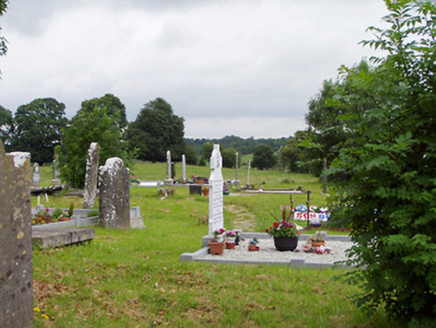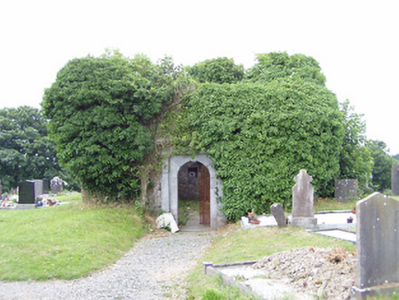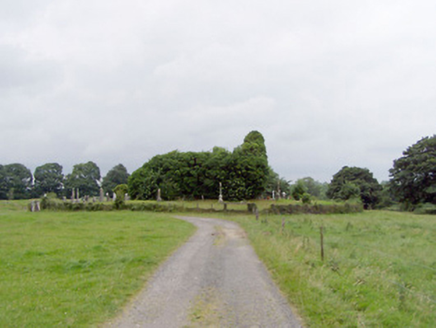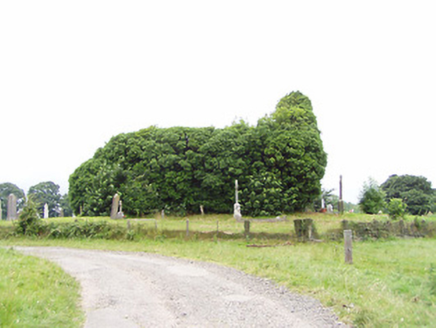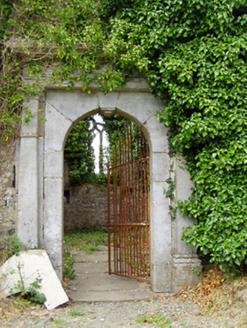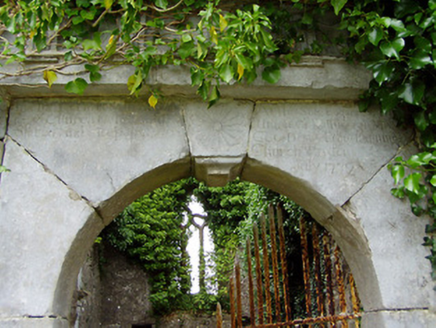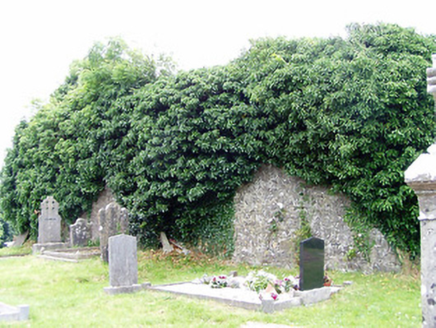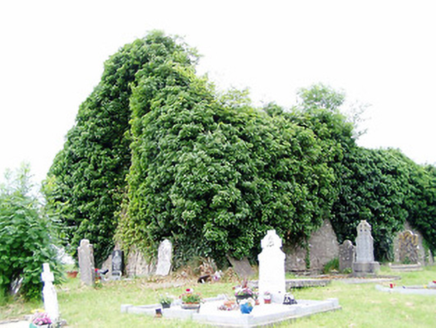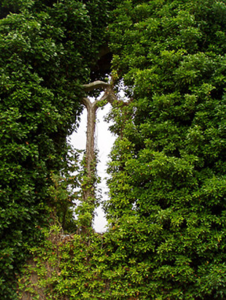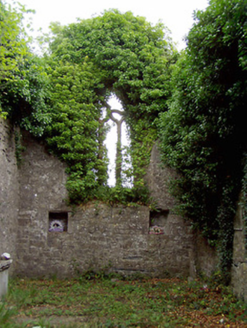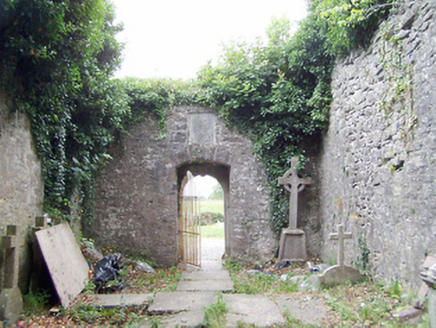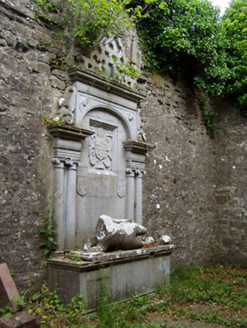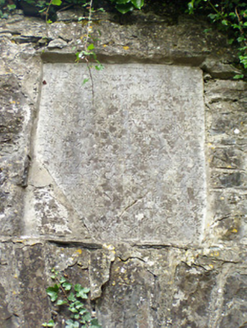Survey Data
Reg No
13315009
Rating
National
Categories of Special Interest
Archaeological, Architectural, Artistic, Historical, Social
Original Use
Church/chapel
Date
1620 - 1775
Coordinates
225441, 264380
Date Recorded
14/07/2005
Date Updated
--/--/--
Description
Freestanding two-bay single-cell Church of Ireland church, built c. 1630, with eighteenth century fabric, having been repaired, remodelled, extended to the west end and re-slated in 1772. Now in ruins and overgrown with ivy. No roof, originally pitched. Roughcast render, now failing, over roughly coursed rubble limestone walls. Two twin-light pointed arch window openings to south elevation of nave having cut stone tracery. Triple-light pointed arch window opening to the east gable end having carved limestone Geometric tracery. Round-headed doorway to the west wall, dated 1772 (rebuilt), comprising ashlar limestone surround with Doric style pilasters supporting entablature with frieze having triglyphs and metopes. Ornate motifs including a bucranium over inscribed voussoirs with carved keystone having floral/patera motif. Ornate carved limestone classical/Jacobean wall tomb/effigial tomb (dated 1634) to the blank north wall, having Ionic pilasters, Fox family coat of arms and reclined figural sculpture (now reduced to torso and thigh) of Sir Nathaniel Fox dressed in full armour. Carved limestone plaque to interior west wall. Graveyard (on sub-octagonal plan) to site bounded by remains of rubble limestone masonry walls. Wrought-iron gate gives access to site. Located to the northeast of Legan and to the north of the site of Fox Hall (demolished 1946).
Appraisal
This single-cell church, although in a ruinous state, retains many interesting and finely carved features such as the Geometric tracery to the window openings and the highly ornate and skillfully carved classical doorway. The church served the Fox Hall demesne (house demolished in 1946) and the illustrious Fox family. The Doric doorcase, although dated 1772 after being rebuilt/re-erected, is an extremely rare example of early seventeenth century classical architecture in Ireland. The east wall contains a three-light window with seventeenth-century stonework on its inner face. The classical wall tomb with Jacobean influences, known locally as "the Stoneman of Foxhall" is surmounted by a finely carved stone figure clad in seventeenth century armour. The tomb is particularly well designed with many finely sculpted features that are well conceived and integrated, such as the paired Ionic columns supporting entablature blocks, the frieze and cornice over and the Fox family coat of arms. The tomb commemorates Sir Nathaniel Fox who died in 1634 and has an inscription in Latin. The Fox family changed the name of the parish from Rathreagh to Foxhall, as recorded in the inscribed voussoirs of the doorcase. The plan of the surrounding graveyard hints that it may have been an earlier church site. The surrounding graveyard, which contains a number of finely carved grave markers, of mainly eighteenth and nineteenth century date, completes the setting and adds to this intriguing site.
